Abstract
The screened Coulomb interaction between polyelectrolyte cylinders immersed in an ionic bath is examined. The electrostatic force and torque acting between a pair of unlike rods is formulated for all separations in which the electrostatic potential on some dividing surface between rods can be written as a linear superposition of isolated cylinder potentials. (The surface potential on the rods themselves may be much higher than that permitted by a superposition approximation.) The mutual energy in the case of skewed rods is found to be exponential in separation and proportional to 1/sin θ where θ is the twist angle of one rod relative to the other. Rods with similar charge repel each other with a torque acting to make the rods perpendicular while rods of opposite charge attract with the parallel arrangement preferred.
Full text
PDF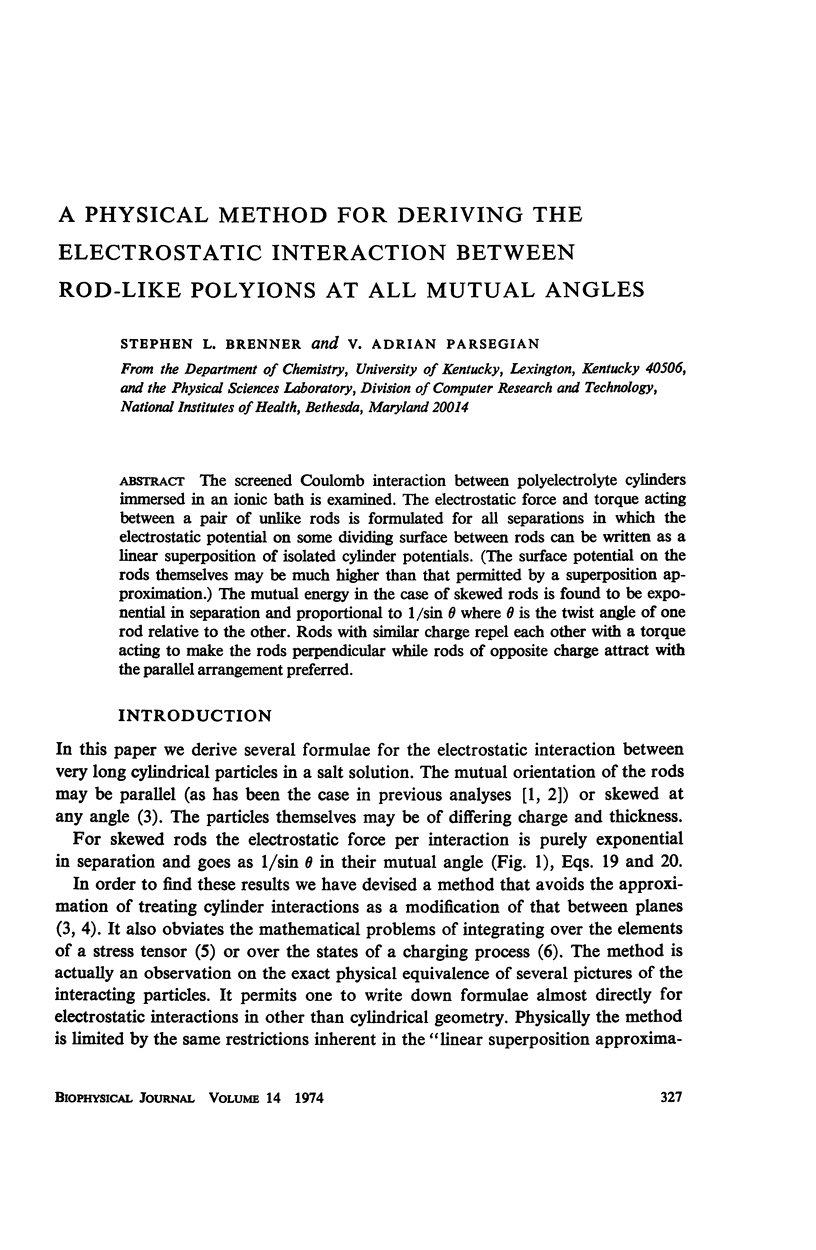
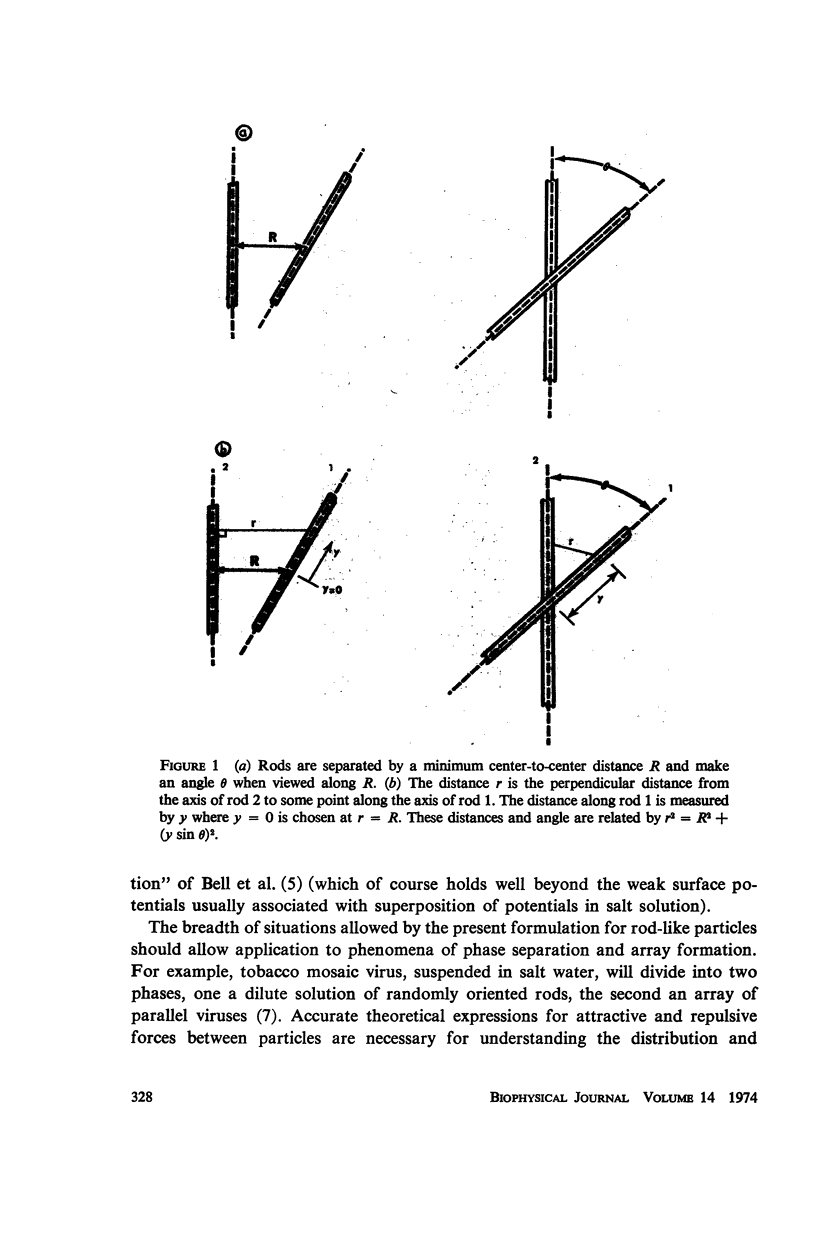

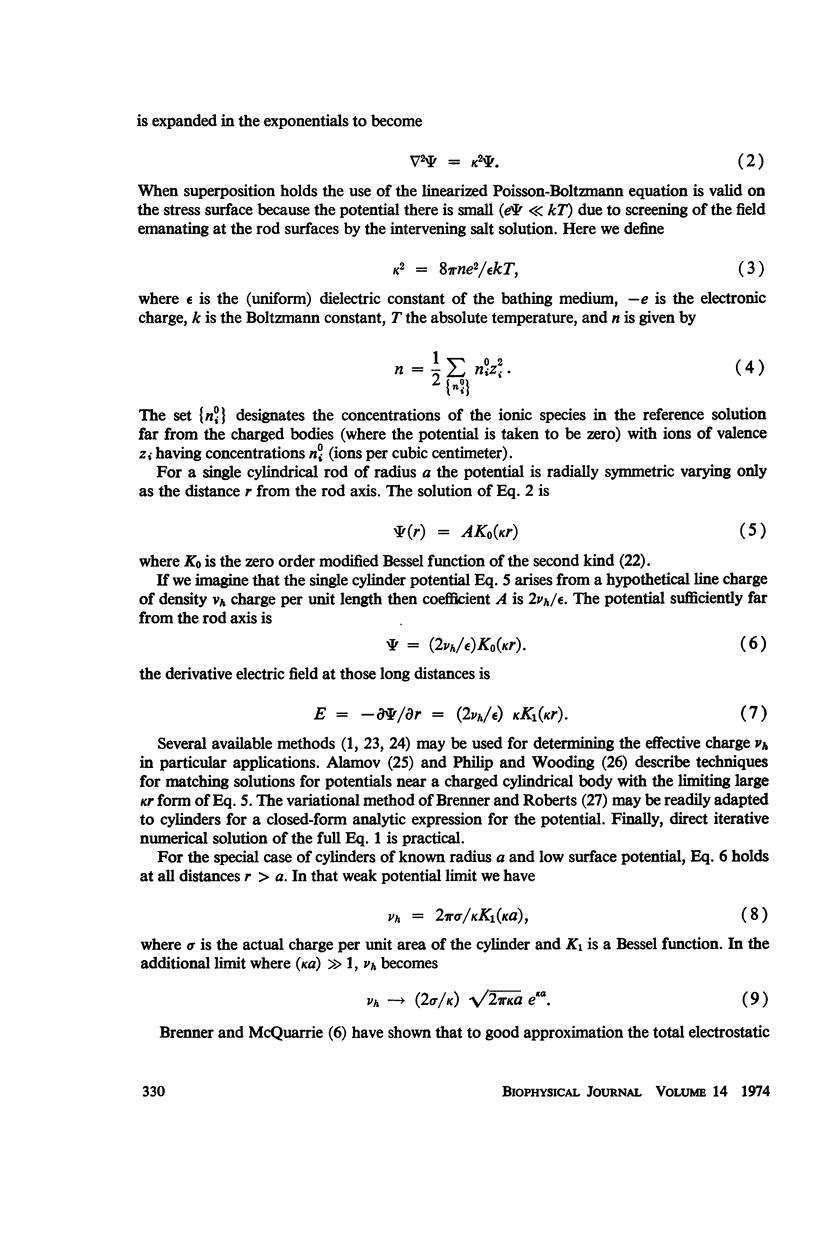

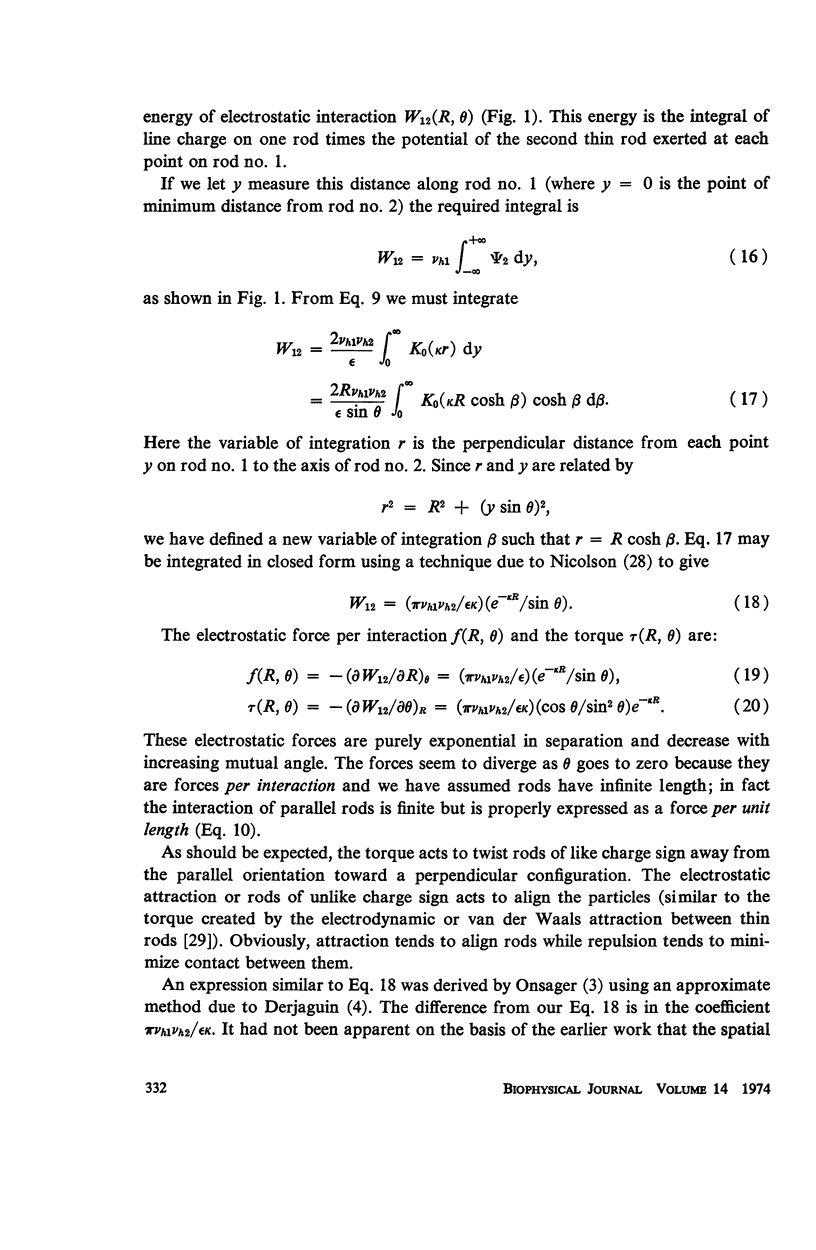
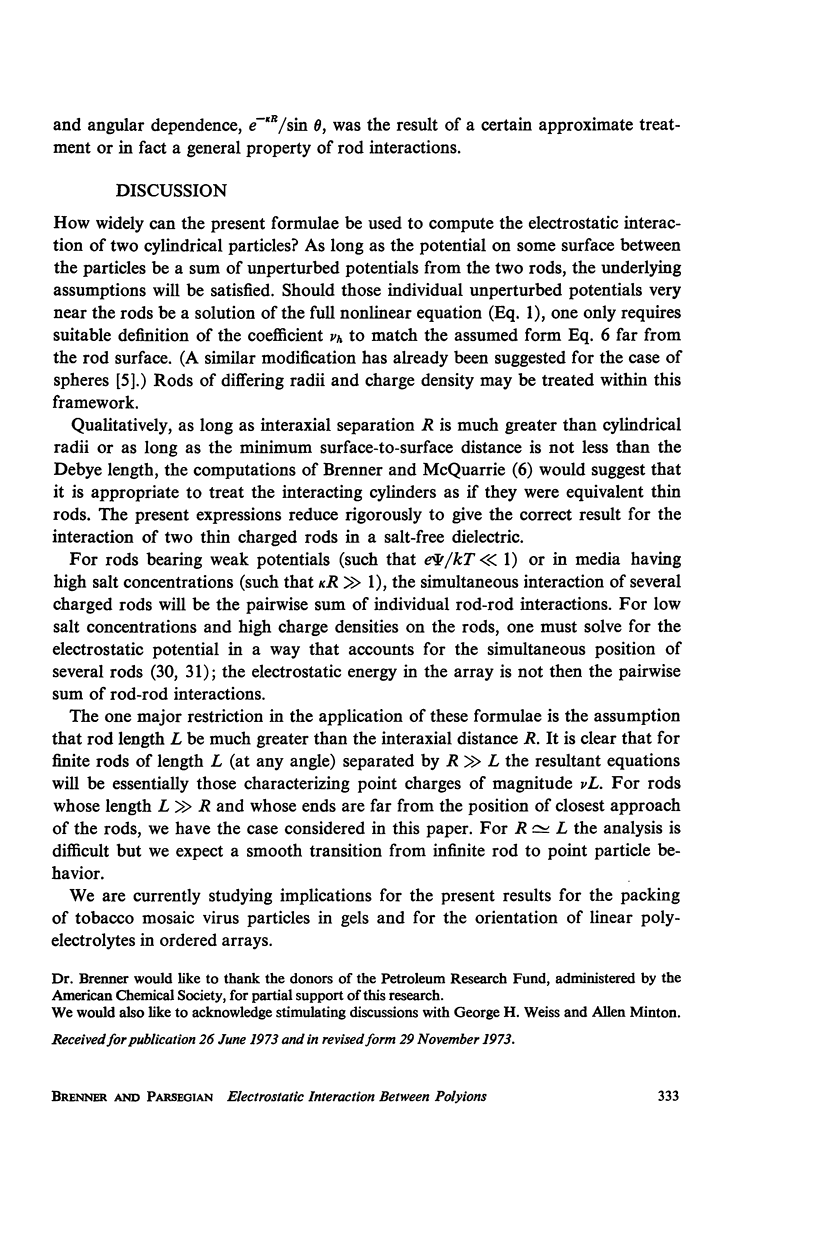
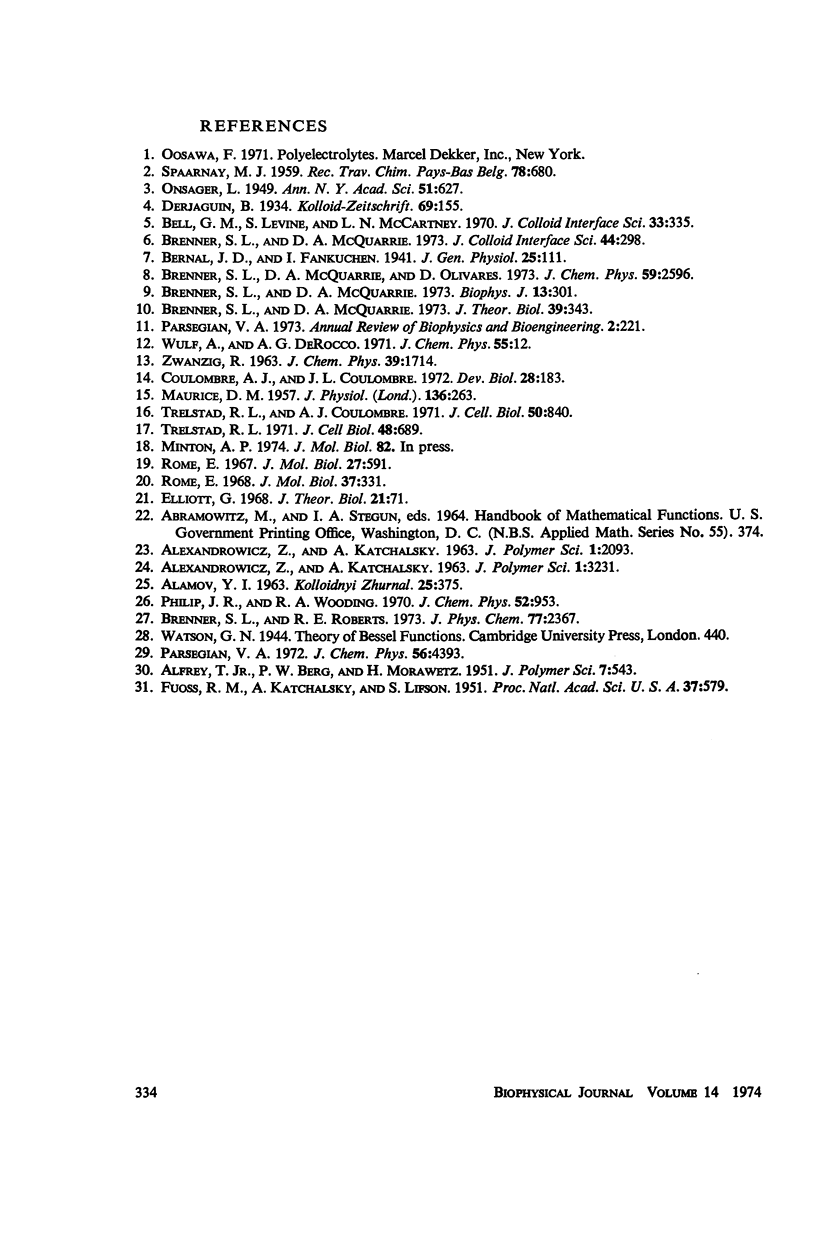
Selected References
These references are in PubMed. This may not be the complete list of references from this article.
- Brenner S. L., McQuarrie D. A. A self-consistent calculation of the free energy and electrostatic potential for a cylindrical polyion. J Theor Biol. 1973 May;39(2):343–361. doi: 10.1016/0022-5193(73)90104-5. [DOI] [PubMed] [Google Scholar]
- Coulombre A. J., Coulombre J. L. Corneal development. IV. Interruption of collagen excretion into the primary stroma of the cornea with L-azetidine-2-carboxylic acid. Dev Biol. 1972 May;28(1):183–190. doi: 10.1016/0012-1606(72)90136-4. [DOI] [PubMed] [Google Scholar]
- Elliott G. F. Force-balances and stability in hexagonally-packed polyelectrolyte systems. J Theor Biol. 1968 Oct;21(1):71–87. doi: 10.1016/0022-5193(68)90060-x. [DOI] [PubMed] [Google Scholar]
- Fuoss R. M., Katchalsky A., Lifson S. The Potential of an Infinite Rod-Like Molecule and the Distribution of the Counter Ions. Proc Natl Acad Sci U S A. 1951 Sep;37(9):579–589. doi: 10.1073/pnas.37.9.579. [DOI] [PMC free article] [PubMed] [Google Scholar]
- MAURICE D. M. The structure and transparency of the cornea. J Physiol. 1957 Apr 30;136(2):263–286. doi: 10.1113/jphysiol.1957.sp005758. [DOI] [PMC free article] [PubMed] [Google Scholar]
- Rome E. Light and X-ray diffraction studies of the filament lattice of glycerol-extracted rabbit psoas muscle. J Mol Biol. 1967 Aug 14;27(3):591–602. doi: 10.1016/0022-2836(67)90061-7. [DOI] [PubMed] [Google Scholar]
- Rome E. X-ray diffraction studies of the filament lattice of striated muscle in various bathing media. J Mol Biol. 1968 Oct 28;37(2):331–344. doi: 10.1016/0022-2836(68)90272-6. [DOI] [PubMed] [Google Scholar]
- Trelstad R. L., Coulombre A. J. Morphogenesis of the collagenous stroma in the chick cornea. J Cell Biol. 1971 Sep;50(3):840–858. doi: 10.1083/jcb.50.3.840. [DOI] [PMC free article] [PubMed] [Google Scholar]
- Trelstad R. L. Vacuoles in the embryonic chick corneal epithelium, an epithelium which produces collagen. J Cell Biol. 1971 Mar;48(3):689–694. doi: 10.1083/jcb.48.3.689. [DOI] [PMC free article] [PubMed] [Google Scholar]


